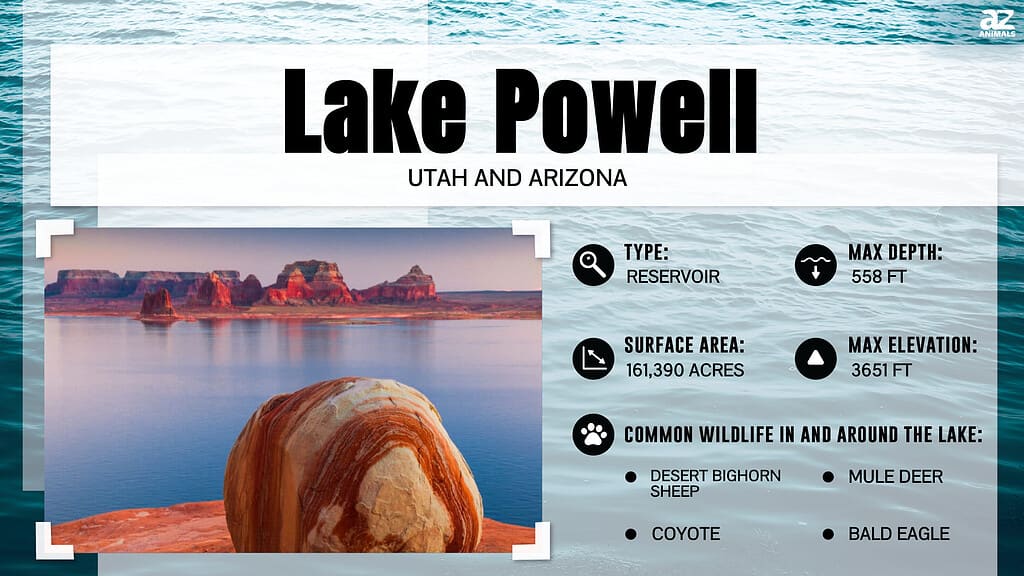
For the first time ever the U.S. Bureau of Reclamation has decided to make an “unprecedented” emergency plan to help the low water levels in Lake Powell. The Lake is at its lowest recorded level ever and the agency is raising the red flag. They have decided to keep 480,000 acre-feet of water in the Lake instead of releasing it like they normally do downstream to Arizona, Nevada and California. What else are agencies doing to manage the water level? How long has the drought been going on? Is it predicted to get better or worse? What happens if the Lake Powell drought gets worse?
What is the Current Water Level in Lake Powell?
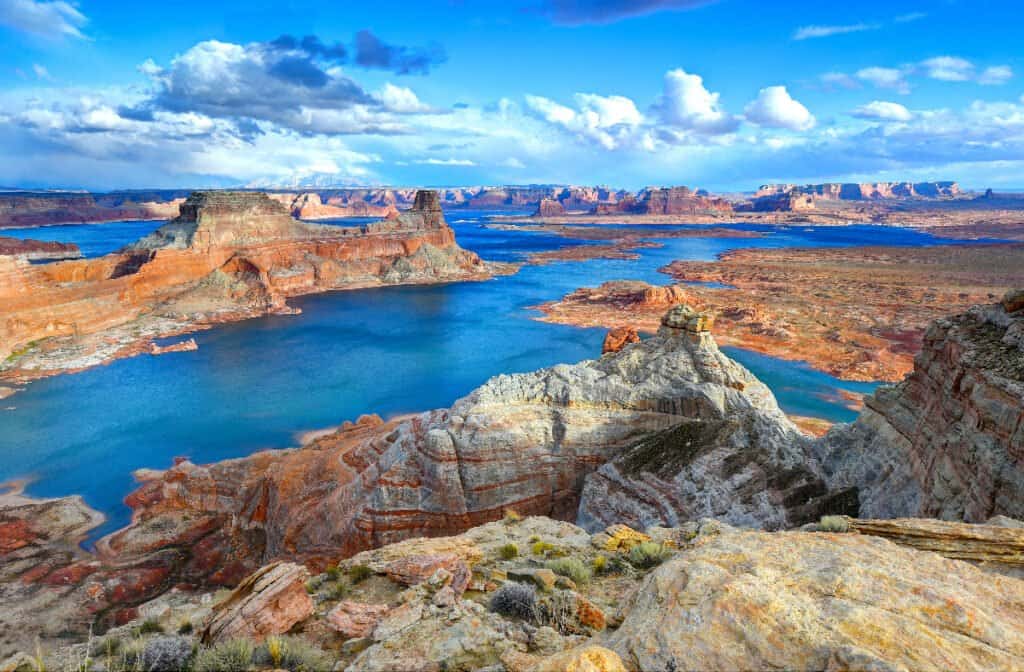
Lake Powell is at the lowest level it has ever been. It just crossed a critical level and is now 3,523 feet.
©worldswildlifewonders/Shutterstock.com
Lake Powell is at 3,523.35 feet above sea level. This has dipped below the “buffer elevation” that was agreed upon during the 2019’s Drought Contingency Plan. This level was set as a red flag to give researchers and scientist’s time to develop a more in depth plan to address the continued drought.
The next red flag level is called the Minimum Power Pool which is the level that experts think that the equipment that generates the electricity inside the dam would be damaged. This level is set at 3,490 feet, which we are 33.35 feet away from. Some experts have said that it is really uncertain what will happen if the water dips below 3,490. Above all, they do know that the water will stop flowing through the dam with gravity at the level of 3,370 feet. This is called a “Dead Pool”. The power plant can absolutely not work at that level.
- Buffer elevation: 3,525 feet
- Minimum Power Pool: 3,490 feet
- Dead Pool: 3,370 feet
Is That Better or Worse Than Average?
The water level is down -37.88 feet from last year at this time! If the drought continues at the same rate as last year it will reach the Dead Pool rate. We are only 33.35 feet away from the Dead Pool rate!
How Long Has the Drought Been Going On?
Some researchers have found it has been a 20 year drought while others are focused on studying the past 15 years. According to one research report by Bradley Udall and Jonathan Overpeck, “Between 2000 and 2014, annual Colorado River flows averaged 19% below the 1906–1999 average, the worst 15-year drought on record.” They went on to say that the drought is likely to continue and significantly affect the water levels of the Colorado River. The incredible thing is they wrote this back in 2017! In addition, they also said, “These results, combined with the increasing likelihood of prolonged drought in the river basin, suggest that future climate change impacts on the Colorado River flows will be much more serious than currently assumed.”
Why is the Water Level in Lake Powell Important?
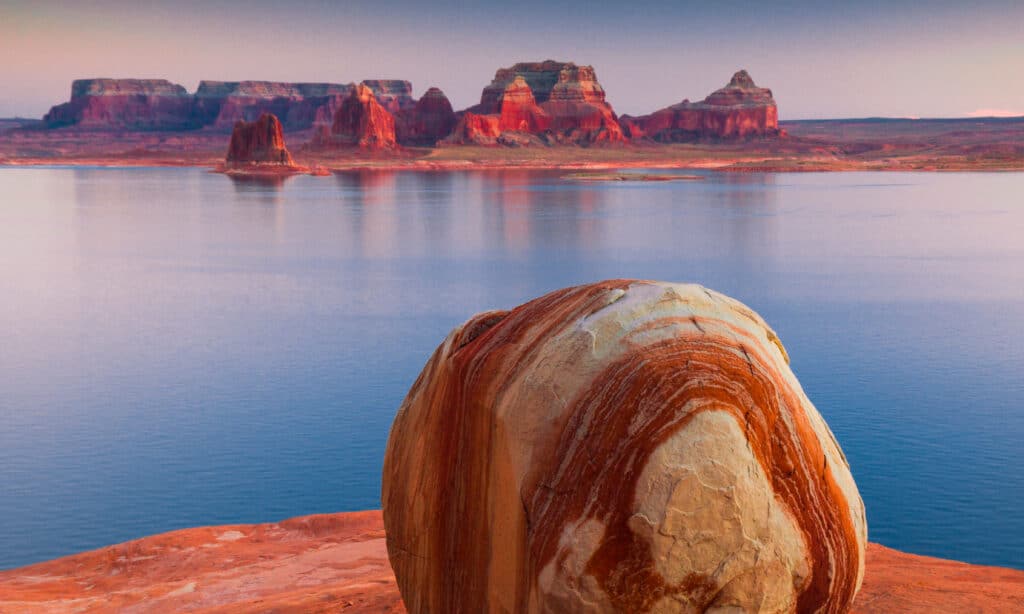
The Lake Powell drought is affecting all of the fish, birds and mammals that call the area their home.
©iStock.com/Lucas Cometto
The water in Lake Powell is from the Colorado River that is dammed at the Glen Canyon Dam. The dam is used as a hydropower generator plant, creating electricity for 7 southwestern states. The water from Lake Powell and the Colorado River is important for:
- Generating electricity for 7 southwest states
- 40 million people who rely on it for their domestic water supplies
- Farmers and rancher who rely on the water for irrigating 3 million acres of farmland
- Recreation businesses who use the lake and river for tourism, white water rafting, houseboating and fishing (bass, crappie, walleye and channel catfish)
- 315 species of birds, 14 native fish species (including 4 endangered species), a variety of amphibians, reptiles and mammals
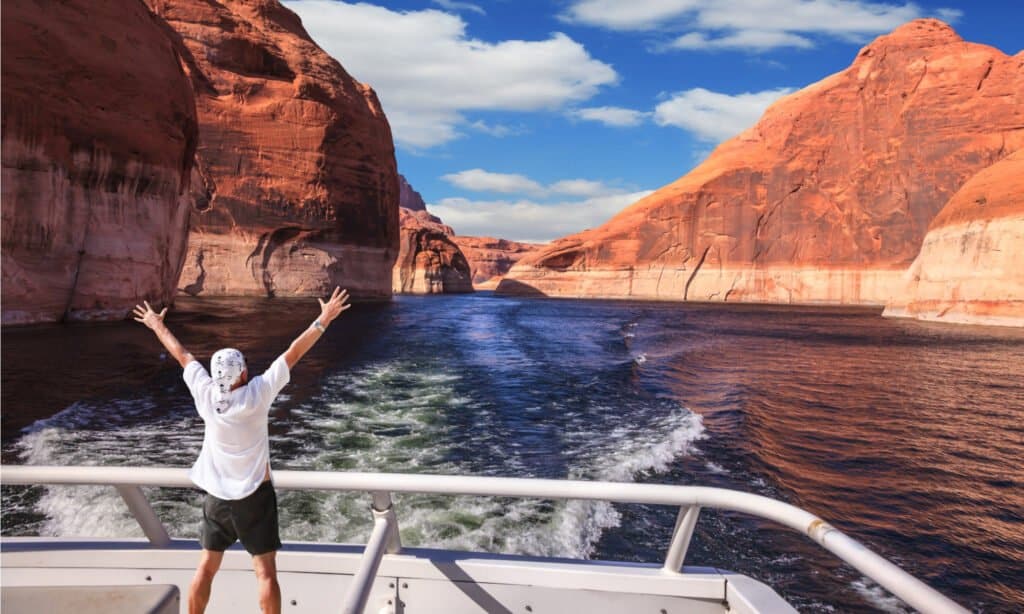
People come from all over to enjoy Lake Powell and the Colorado River.
©kavram/Shutterstock.com
What State Rely on the Electricity from the Glen Canyon Dam?
The states that rely on electricity are Arizona, Nevada, New Mexico, Utah, Nebraska, Colorado and Wyoming.
How Much Electricity Does the Power Plant Generate?
The Glen Canyon Power plant generates five billion kilowatt-hours of hydroelectric power a year.
How Big is the Glen Canyon Dam?

Glen Canyon Dam is 710 feet high.
©Alex Papp/Shutterstock.com
The Glen Canyon Dam is the second highest dam in the United States. It is 710 feet high. The Hoover Dam, on the border of Arizona and Nevada is taller at 726 feet high.
Is the Water Level Expected to Increase?
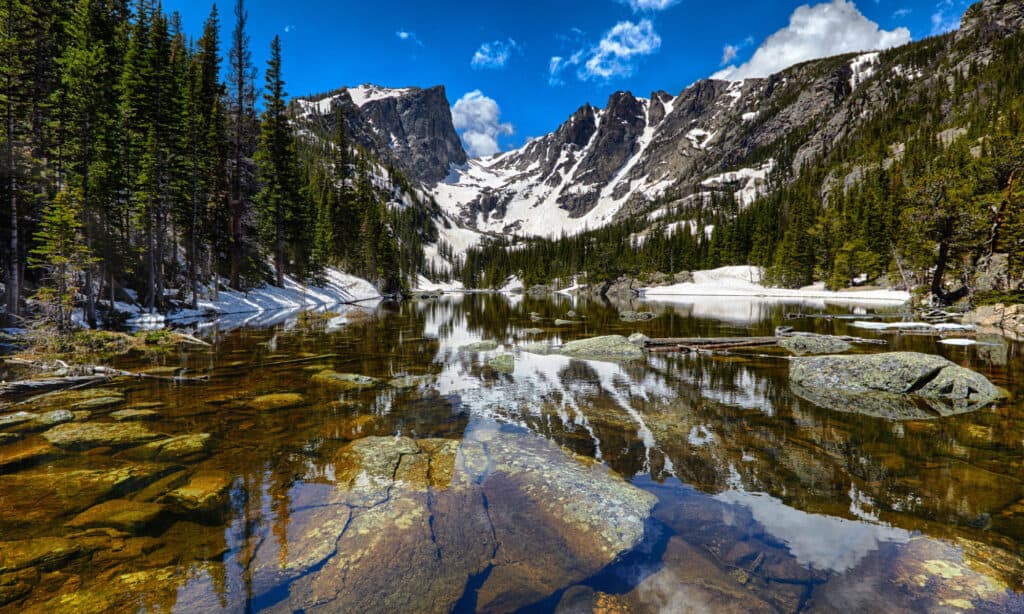
Snow melt from the mountains feed the Colorado River which runs into Lake Powell.
©iStock.com/zhuzhu
Yes and no. This Spring there should be an increase in the water level as the snow from the surrounding mountains melt and run into the Colorado River. This will help the effects of the Lake Powell drought in the short term. However, the National Oceanic and Atmospheric Administration (NOAA) just released its May monthly water supply forecast and it doesn’t look good. The report stated, “The forecast estimated that the amount of water that will flow into Lake Powell this spring and summer will be about 59% of average, based on 30 years of data from 1991 to 2020.” Earlier in the year the Colorado River Basin had seven-weeks of near record low snowfalls. That will affect the amount of snow available to melt and contribute to the River and Lake Powell.
What Are Agencies Doing to Help the Lake Powell Drought?
Federal and state water managers as well as local tribal nations have come up with the following plan:
- Witholding 480,000 acre-feet from going downstream
- Release 500,000 acre-feet of water from Flaming Gorge reservoir in Wyoming
- Sent letters to the seven Colorado Basin states explaining the water shortage and encouraging people to conserve water
- Studying ways to modify the generators to be able to work at lower water levels
- The National Oceanic and Atmospheric Administration’s Colorado Basin River Forecast Center will continue to monitor the water levels, run off predictions and precipitation
- Considering creating a “Cloud Seeding” program
What is the Worst Case Scenario?
The worst case scenario is that the drought conditions continue and we hit the Minimum Power Pool Level, followed by the Dead Pool level. This would shut down the Glen Canyon Power plant. The power plant and the hydroelectric program would have to be discontinued. Both water supplies and electricity supplies would have to come from other sources and dramatically decrease usage. Another problem, for instance is that farmers and ranchers in the area would have to move to better land or change occupations. Small towns along the river may become ghost towns if jobs created by the Power plant are eliminated. The birds, fish, mammals and other plants and animals would be affected by the habitat loss, including the endangered species like the Colorado pikeminnow, razorback sucker, bonytail, and humpback chub.
What Can We do About the Lake Powell Drought?
In Conclusion, hopefully local authorities and agencies along with the people of the United States will come together to help solve the problem. Everyone can take a look at their water and energy usage and find ways to cut back. Above all we can reduce the demand for water and electricity, across the country. There will be fewer greenhouse gasses released, and the temperature may be brought back down. Therefore, if temperatures return to what they were 20 years ago, the rain and snow levels should return to the pre-drought levels as well!
The photo featured at the top of this post is © Galyna Andrushko/Shutterstock.com
Thank you for reading! Have some feedback for us? Contact the AZ Animals editorial team.






